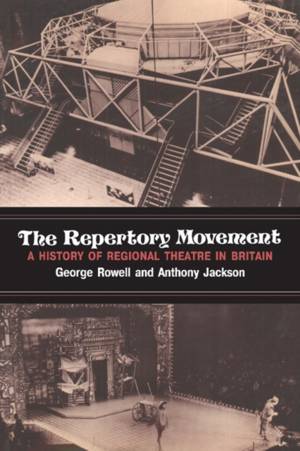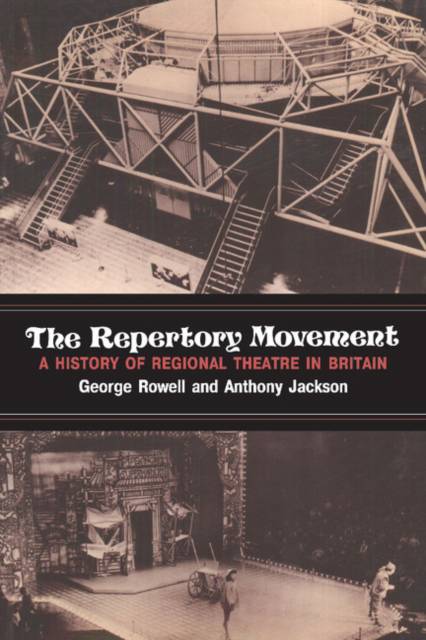
Je cadeautjes zeker op tijd in huis hebben voor de feestdagen? Kom langs in onze winkels en vind het perfecte geschenk!
- Afhalen na 1 uur in een winkel met voorraad
- Gratis thuislevering in België vanaf € 30
- Ruim aanbod met 7 miljoen producten
Je cadeautjes zeker op tijd in huis hebben voor de feestdagen? Kom langs in onze winkels en vind het perfecte geschenk!
- Afhalen na 1 uur in een winkel met voorraad
- Gratis thuislevering in België vanaf € 30
- Ruim aanbod met 7 miljoen producten
Zoeken
€ 70,95
+ 141 punten
Omschrijving
This is an account of the origins, development and current state of the repertory theatre movement in Britain. The movement had its roots in ideas, experiments and traditions stretching back into the nineteenth century, and first found its voice in 1907 with Miss Horniman's company in Manchester. Since then it has played a vital - often a dominant - role in British twentieth-century theatre. As a method of theatre organisation, repertory refers to those theatres based primarily in the regions, housing a resident acting company and seeking to maintain each season a programme of plays catering for the tastes of the whole community. But the theory has never been dogmatic and the movement has evolved from a gamut of complex factors, not least the visions of particular personalities. Major landmarks in the history include the effects of the two World Wars, the advent of substantial state funding for the Arts, the growth of cinema and television and the renewal of theatre's link with the community in the form of such initiatives as Theatre- in-Education. The history concludes with a detailed study of six representative regional theatres: The Nottingham Playhouse; The Citizens' Theatre, Glasgow; The Salisbury Playhouse; The Victoria Theatre, Stoke; The Everyman, Liverpool; and The Royal Exchange, Manchester. Appendixes include a Chronology, sample repertory programmes from the period, audience attendance figures and some comparative statistics about funding. Interspersed through the text are photographs of selected theatre exteriors, auditoria, stages and productions.
Specificaties
Betrokkenen
- Auteur(s):
- Uitgeverij:
Inhoud
- Aantal bladzijden:
- 244
- Taal:
- Engels
Eigenschappen
- Productcode (EAN):
- 9780521319195
- Verschijningsdatum:
- 18/10/1984
- Uitvoering:
- Paperback
- Formaat:
- Trade paperback (VS)
- Afmetingen:
- 156 mm x 230 mm
- Gewicht:
- 403 g

Alleen bij Standaard Boekhandel
+ 141 punten op je klantenkaart van Standaard Boekhandel
Beoordelingen
We publiceren alleen reviews die voldoen aan de voorwaarden voor reviews. Bekijk onze voorwaarden voor reviews.









